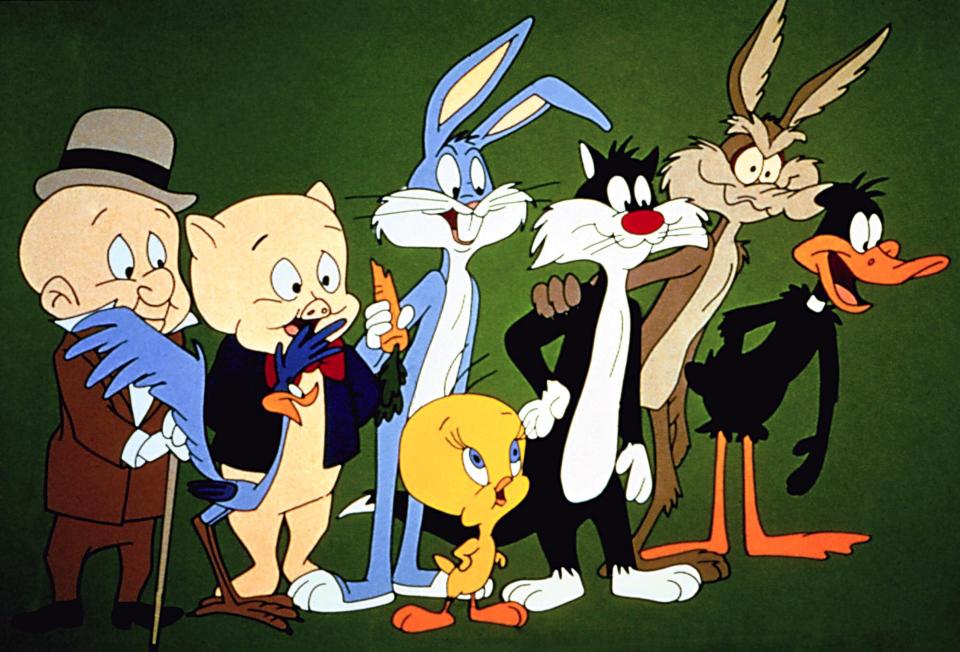The best classic Looney Tunes cartoons you can stream on HBO Max right now

- Oops!Something went wrong.Please try again later.
- Oops!Something went wrong.Please try again later.
- Oops!Something went wrong.Please try again later.
- Oops!Something went wrong.Please try again later.
- Oops!Something went wrong.Please try again later.
- Oops!Something went wrong.Please try again later.
- Oops!Something went wrong.Please try again later.
HBO Max has been around since May 2020, and as you may or may not know by now, the WarnerMedia streaming service is home to a lot more than just HBO titles. It's got Studio Ghibli's complete output, a surprising amount of classic and international films, and — rejoice! — a heaping helping of Looney Tunes, many of which are available on streaming for the first time.

Everett Collection
Since we could all use a little more laughter these days, we here at EW have put together a guide to some of the best Tunes currently available on HBO Max. There are many more to be found, of course, both on and off the platform (seek out the 1951 masterpiece Chow Hound — but maybe don't show it to your kids). The streaming service also includes a delightful new series of throwback-style shorts called Looney Tunes Cartoons, but of course, nothing beats the original. (Also, be warned: for some reason, HBO Max has grouped the shorts by "seasons" rather than characters or categories; you can't even see every cartoon listed alphabetically at the moment.) Check out our picks below.
Rhapsody in Rivets (1941) and Rhapsody Rabbit (1946)
Though many a Warner Bros. cartoon made excellent use of music, no director did it better than Friz Freleng, who would time his shorts out on musical bar sheets to better sync the action to music. (If you see a cartoon where musical notes accompany characters' steps, it's likely a Freleng joint.) Freleng also loved classical music, and made several cartoons that utilized it extensively. Two of the best are Rhapsody in Rivets and Rhapsody Rabbit, both featuring Franz Liszt's Hungarian Rhapsody No. 2. In the former, a construction foreman conducts his workers through a "performance" of the piece as they build a skyscraper, while in the latter, Bugs Bunny performs the Rhapsody on the piano before an audience while being tormented by a pesky mouse.
Draftee Daffy (1945)
This cartoon probably didn't air on TV much when you were a kid. Produced during World War II, Draftee Daffy casts the duck as a would-be draft dodger (yes, really), resisting all attempts by "the little man from the draft board" to deliver his conscription notice. Helmed by master director Bob Clampett, Draftee Daffy is gloriously unhinged as only Clampett's cartoons are, fast and furious even by Warner Bros. standards, with some of the wildest animation you'll ever see on screen.
Baseball Bugs (1946)
The gold standard of the prototypical Bugs Bunny cartoon, Baseball Bugs sees the wascally wabbit take on the pugnacious Gas-House Gorillas baseball team, playing every position himself. Packed with brilliant gags ("Oh, uh, bat boy," Bugs calls; cue a bat-winged kid floating into frame with a stack of baseball bats) and classic Bugs trickery (the reversal above predates "wabbit season/duck season" by several years), it's everything you want out of a Warner Bros. cartoon.
Back Alley Oproar (1948)
Another showcase for Freleng's musical dexterity, this cartoon pits a caterwauling (sorry) Sylvester against Elmer Fudd, who's just trying to get a good night's sleep. The feline's songs run the gamut from popular hits of the day to arias ("FIIIIIIGARO!"), which may plant a lifelong interest in opera in young viewers. (This writer is willing to admit that this cartoon is what drew him to Lucia di Lammermoor.)
Rabbit of Seville (1950)
Speaking of opera — and Elmer Fudd — Rabbit of Seville proved Freleng's fellow director Chuck Jones could go toe-to-toe with him in the classical music arena. When Elmer chases Bugs into a theater where a performance of The Barber of Seville is about to begin, the rabbit seizes his opportunity and subjects the hunter to a musical mangling, to the strains of Rossini's immortal music. Jones would tackle opera again in 1957's much-acclaimed What's Opera, Doc? (also available to stream) — a triumph of animated artistry, to be sure, but one that can't quite match Rabbit of Seville for pure entertainment.
Feed the Kitty (1952)
In Feed the Kitty, tender-hearted bulldog Marc Anthony befriends a tiny kitten (later known as Pussyfoot) and attempts to keep the cat hidden from his owner. Hijinks ensue, of course, most notably a sequence where the dog believes his friend has been baked into cookies. Just watch Marc Anthony's reactions in the clip above — character animation doesn't get much better than that.
Duck Amuck (1953)
The cartoon that probably introduced most kids to existentialism and self-reflexive filmmaking, Duck Amuck sees Daffy tormented by an unseen animator in just about every manner possible in a cartoon: changing backgrounds, erasing him, taking out the sound, and much more. This might take the title of the best cartoon in the Warner Bros. canon, were it not for...
One Froggy Evening (1955)
No less than Steven Spielberg called this Chuck Jones masterpiece "the Citizen Kane of animated shorts," and you won't hear any argument here. When a construction worker discovers a singing, dancing frog among the ruins of a demolished building, he immediately gets dollar signs in his eyes — only to have his hopes quashed when the frog stubbornly refuses to perform for anyone but the construction worker. Devoid of any spoken dialogue, this cartoon is pure filmmaking at its finest, and possibly the best Looney Tune ever produced.

